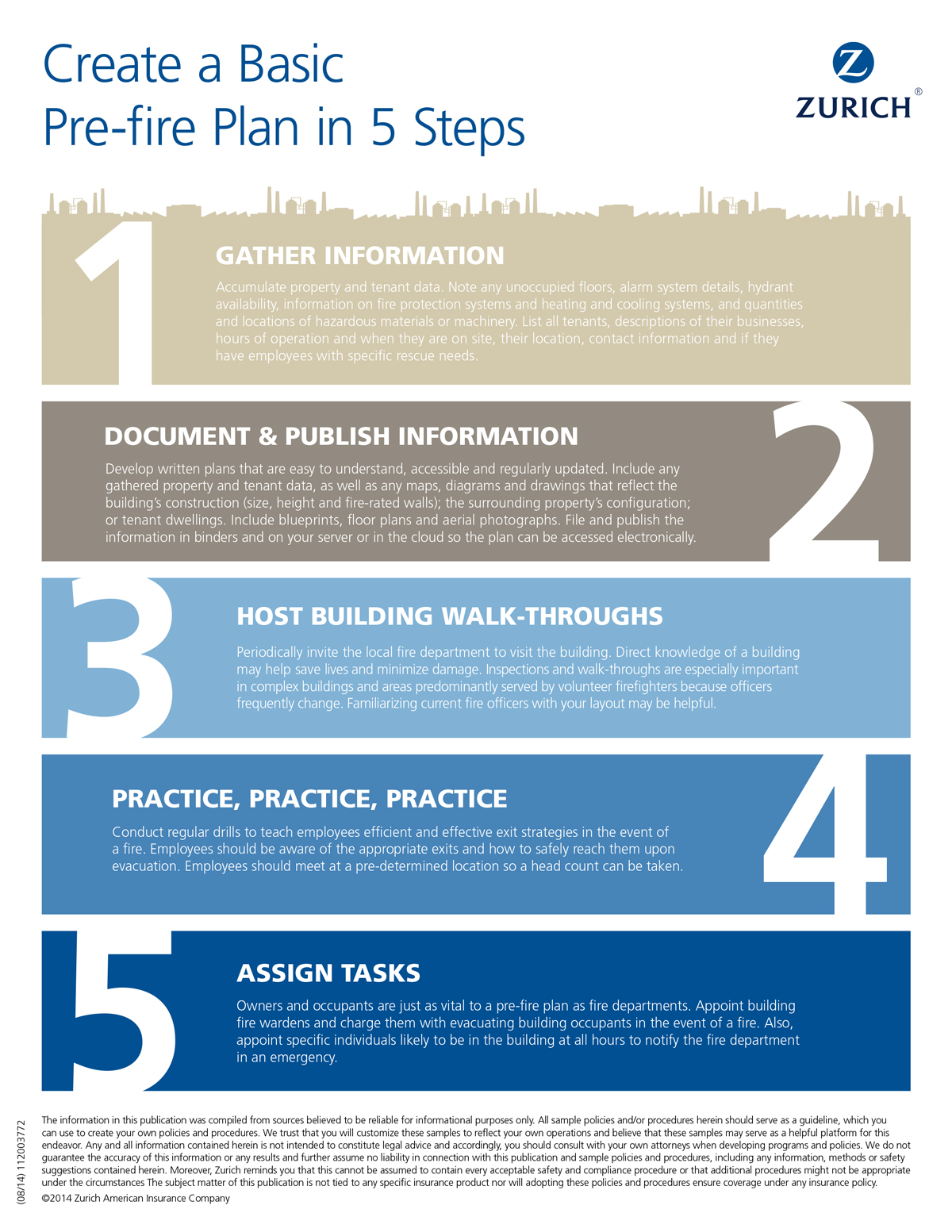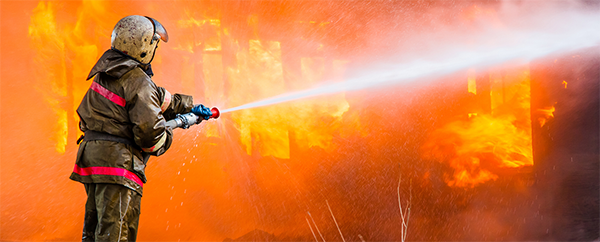Help your commercial clients create a fire protection and prevention plan
As one of the greatest hazards that a business can experience, fire rates near the top. Each year, several thousand lives are lost to fires, tens of thousands of people are seriously injured, and billions of dollars in property is destroyed or damaged by fires. Help your commercial clients guard against this risk by sharing these best practices for a fire protection and prevention plan as part of their risk management plan.
This blogpost is focused specifically on manmade fires – not wildfires (many of which actually are manmade). We’ll cover wildfires in a subsequent post.
Most fires can be prevented by using proper building materials, plus identification and protection of special hazards, says The Hartford. The use of detection and suppression equipment, along with education and involvement of the organization’s senior management are also key prevention considerations on which we’ll take a closer look.
Before a fire: Prepare and launch your fire protection and prevention plan
Establish an Emergency Preparedness Plan (EPP) that takes prevention, emergency response, and disaster recovery into consideration. If an EPP is already in place, review and update it as needed for fire readiness.
Zurich says that before you create your pre-fire plan, you’ll need a solid understanding of your building’s construction, floorplan and occupancy. This helps firefighters and other emergency response personnel to more effectively resolve a crisis.
Observe not only the building’s layout and construction materials, but also parking lot entrances, hydrant locations and nearby structures. Include a floorplan of each level that shows elevators, fire escape stairwells, heating and air conditioning equipment, smoke detectors, fire alarms, sprinkler systems and controls, and utility shutoffs.
Related: Fire prevention tips for businesses
Your commercial client should also conduct a hazard assessment and safety appraisal of the facility and its operations.
In launching a fire protection and prevention plan, be sure to include the following:
- Smoking regulations that are supported and enforced by management.
- Safe procedures for handling and storing flammable gases and liquids.
- Safe means of performing hot work (e.g., welding).
- A thorough description of good housekeeping methods such as not allowing rubbish to accumulate or aisles to be blocked.
In developing the plan, your client may discover they need to install or upgrade various fire prevention features. They may need to upgrade their facility to meet current fire codes. If so, remind them to use noncombustible and fire-resistant building materials. Additionally, encourage them to follow these safety tips from Zurich, The Hartford and the Small Business Administration:
- Ensure the preventive maintenance program for operational equipment (building utilities, processing equipment and material handling equipment) meets manufacturer’s specifications and industry standards.
- Install fire detection systems (e.g., fire alarm systems) and fire suppression systems (e.g., fire extinguishers, sprinkler systems, and carbon dioxide) in the building, particularly in hazardous locations.
- Keep an adequate number of appropriate fire extinguishers in strategic locations (such as near loading docks and waste collection areas). Maintain them properly and train staff on their use.
- Test all fire and life safety detection and suppression equipment per local and national fire codes.
- Consider maintaining a water supply at the facility to control small fires until emergency personnel can arrive.
- Ensure there’s an adequate water supply for the sprinkler system. Evaluate the water supply’s volume, pressure, and duration (e.g., pressure, suction, or gravity/elevated tanks).
- When reservoirs, ponds, rivers, and other similar bodies of water are used to supply the sprinkler system, evaluate how any unusual weather conditions such as winter freezes or extremely hot weather may affect supply.
- Have available appropriate tools such as rakes, axes, saws, buckets and shovels to help control small fires while waiting for emergency personnel to arrive.
- Meet with the local fire department to familiarize them with special hazards and emergency procedures.
- Develop mutual aid agreements with other companies.
- Keep a list of all vendors’ and key customers’ telephone numbers and other important contact information available and secured.
- Provide a warning system for all personnel on the premises.
Related: 31 restaurant fire prevention tips for business owners
Protect employees
- Train employees in general fire safety, especially for tasks with a high fire risk such as welding and cutting, fueling vehicles or working with flammable liquids.
- Teach employees about the importance of good housekeeping and grounds maintenance in preventing and controlling fires.
- Train key employees in when and how to use fire extinguishers.
- Consider when and how to evacuate employees if needed.
- Establish an evacuation plan and keep it up to date.
- Hold evacuation drills regularly so all employees are familiar with evacuation routes and routines and know who’s in charge.
- Make sure all employees can get out of the building and communicate with a responsible person.
- Plan primary and secondary exits from your buildings. Consider how employees will escape if doors or windows are blocked by an exterior fire.
Once your client’s emergency fire plan is in place, they’ll need to provide it to local fire officials and update it on a regular basis. Be sure to alert them to such updates as material changes to the construction of a building, building occupancy or changes to the surrounding property. A walking tour with a member of the local fire department is also advised.
Related: Help clients stamp out construction fire hazards
During a fire: Enact your fire protection plan
- Identify the affected area and sound the alarm.
- Call the public fire department.
- Evacuate all visitors and employees.
- Position security staff at the front entrance of the building (or wherever appropriate) to meet, brief, and escort the fire department.
- When directed by the fire department, notify the electric company to cut off electric power to the facility.
Related: Auto recycler fire risks
After a fire: Begin recovery
- Conduct a roll call of all personnel, including visitors.
- Assess the structure for damage.
- If there is no power, check to make sure the main breaker is on. Fires may cause breakers to trip. If the breakers are on and power is still not available, contact the utility company.
- Inspect all other utilities and turn off those that are damaged.
- ALWAYS contact 911 if any danger is perceived upon re-entry and contact local experts before finally moving back in.
- Protect equipment and inventory against further damage from water or exposure to the elements.
- Restore fire detection and suppression systems.
- Arrange for security at the scene.
- Call your insurance company to begin a claim.
- Photograph and document the damage.
- Begin salvage operations.
View Zurich’s infographic below on how to create a basic pre-fire plan in 5 steps.


